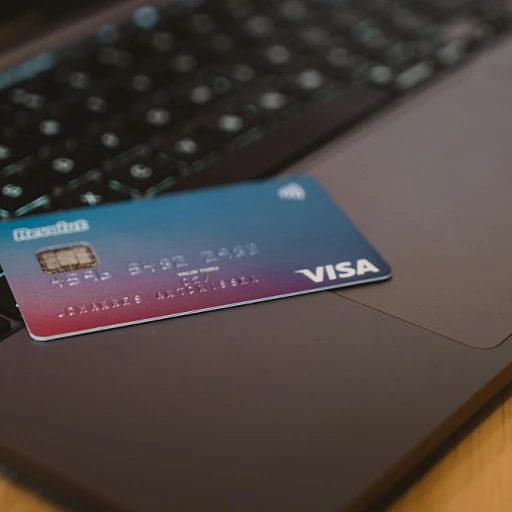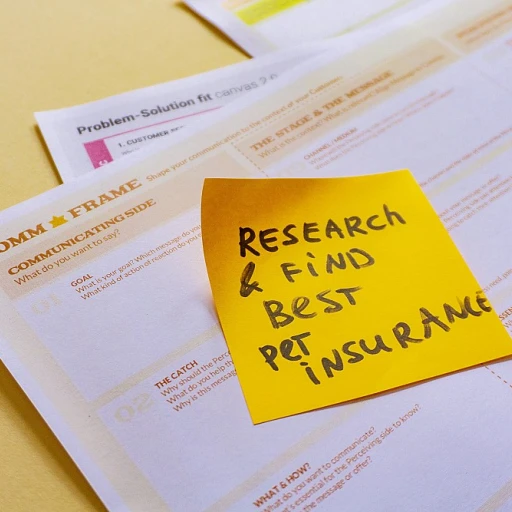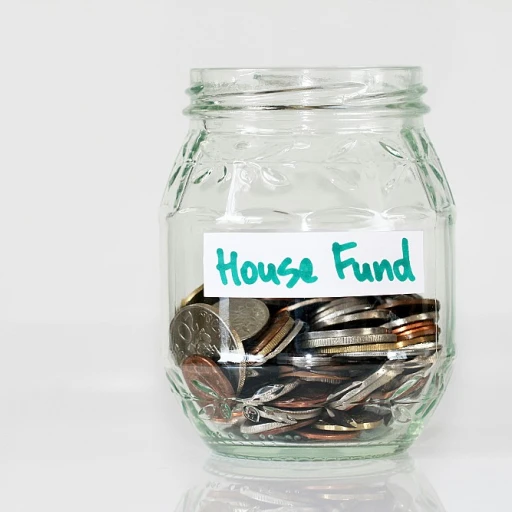Sowing Seeds for Sustainability: How Green Business Strategies Thrive
The Genesis of Green Business Growth
It's clear as day; the tide's turning toward a greener horizon. Companies are waking up to the fact that sustainable business practices are more than mere buzzwords—they're the new currency in a savvier consumer market. But what does it take to plant the first seed of change? Well, businesses are beginning to realize that it's about aligning mission statement heavyweights with the nitty-gritty of daily operations.
Rewriting the Corporate DNA: Sustainability at the Core
Imagine a world where a company's DNA is coded with sustainability goals. We're not talking about slapping 'eco-friendly' on labels for a quick sell. Oh no, we're delving into the essence of business strategy, where every decision runs through a green filter. It's a tall order, but as more businesses make the shift, they find that sustainable practices do indeed bolster the bottom line.
Nurturing Growth: Smart Strategies That Sprout Success
Let's say you've got the green light to revamp your business strategy with an earth-friendly twist. You're thinking, 'How on Earth do I start?' For starters, recast waste as the enemy, champion energy efficiency, and curate supply chains with a conscious. These aren't just feel-good actions; they're tactics that save the green in your wallet and our planet—one conscientious step at a time.
The Harvest: Growth Meets Green
Embarking on the journey to sustainability business models isn't a walk in the park, but the benefits are as real as they get. Reduced carbon footprint, enhanced brand loyalty, and a secured future for the next generation. These are the fruits waiting to be reaped for businesses willing to cultivate sustainable business practices right from the get-go. The ripple effects will touch on renewable energy integration, waste reduction mechanisms, and the social impact of doing right by Mother Earth.
Mapping the Sustainable Business Journey: Key Milestones to Aim For
Setting the Cornerstones of a Sustainable Business Model
Embarking on a sustainable business journey is akin to charting a course for a ship on vast oceans. There's a need to know the crucial milestones to navigate towards. Businesses that commit to sustainability often start by sculpting their mission statements to reflect their dedication to the environment and society. This includes integrating environmental social governance (ESG) principles that resonate deeply with contemporary customers who value a company's ethical stance.
Next, comes the nitty-gritty work of analyzing and overhauling business processes. A thorough assessment can unveil areas where energy efficiencies can be improved and carbon footprints can be reduced. Companies on the vanguard of this movement, like Patagonia and Unilever, not only make these changes but openly communicate them to inspire others. Implementing eco-friendly, energy-efficient practices isn't just good for the planet—it's becoming an essential part of brand identity.
Fleshing Out a Framework for Eco-Innovation
Innovative strategies are key drivers for businesses looking to reduce environmental impacts. Many leaders are turning to renewable energy sources, such as solar and wind, to power their operations. In sectors ranging from tech with IBM's commitment to renewable energy, to fashion, where upcycling and recycling have become fashionable, innovation is the linchpin of progress.
Another concrete step in the sustainable journey is toward understanding and reducing waste. Whether it's through lean manufacturing practices that pare down excess or initiatives that repurpose materials that would have been discarded, waste reduction helps our Earth while often cutting costs. And it doesn't stop at the physical—digital waste is also on the radar, with companies working to make their IT operations as green as their ethos.
Educating Teams and Customers for Sustainable Synergy
The journey is as much about educating and bringing along a company's people and its customers. After all, sustainable practices are only as effective as the understanding and enthusiasm behind them. Businesses that foster a culture of learning and engagement find more innovative solutions and enjoy buy-in from team members. Moreover, when customers see a company's honest efforts to tackle climate change and environmental challenges, brand loyalty often strengthens.
California and Singapore have demonstrated that regulations and incentives can push businesses toward greener practices. Changed behavior, encouraged through policy, can set an example for the private sector, showing that sustainability is not only feasible but favorable for the bottom line. This partnership between policy and business practices underscores the potential for meaningful environmental and social impact.
Championing Transparency and Accountability
A cornerstone of the journey is the commitment to transparency. As businesses strive for sustainability, they must also demonstrate their progress. Using metrics and benchmarks, like the reduction of greenhouse gas emissions or improvements in the amount of recycled content, companies can create a clear, quantifiable view of their successes and areas for improvement. This openness not only assures customers and investors; it can shape industry standards and elevate the company's reputation.
Lastly, championing transparency means embracing accountability. It is one thing to declare sustainability goals, yet another to report on them regularly with honesty, even when the news isn't all green. It's essential for businesses to be as robust in their reporting of setbacks as their victories, cultivating trust and support from stakeholders and the market alike.
The Role of Renewable Energy in Shaping Sustainable Enterprises
Renewable Energy: The Powerhouse of Sustainable Business
The pressing need to tackle climate change has put renewable energy front and center in the strategic conversations of company boardrooms. Renewable energy sources, like solar, wind, and hydropower, offer a critical counterpoint to the traditional energy grid, heavily reliant on fossil fuels. By transitioning to renewables, businesses are not only doing their part in reducing carbon emissions but are also gunning for long-term cost savings and energy security.
Harvesting Energy Efficiency and Innovation
It’s not just about making a switch but about innovating for efficiency. Companies are now investing in smart technologies to optimally manage their energy use. Integrating IoT devices can lead to a smarter consumption model, where each watt is accounted for, and nothing goes to waste. Naturally, turning to eco-friendly practices not only paves the way for a greener planet but also enhances a company's rapport with environment-conscious customers.
Fueling a Competitive Edge
Let's face it, green is the new gold in the business landscape. Renewable energy is not just an ethical choice; it's a savvy one. By reducing dependency on unpredictable fossil fuel markets, businesses safeguard against future energy price hikes. This energy autonomy can quickly turn into a unique selling proposition, attracting customers and investors alike who are eager to support companies making real efforts to mitigate environmental impacts.
The Bottom Line Benefits
So, what’s the upshot of riding the renewable wave? For starters, think about the potential for shrinking your company's carbon footprint. But it's not just about the environment. It's equally about the bottom line. Renewable energy can significantly reduce operational costs over time. Furthermore, with government incentives and tax breaks in play for sustainable initiatives, there's a compelling financial case for businesses to invest in sustainable strategies that will spark prosperity for years to come.
Trimming the Excess: Waste Reduction Tactics for a Leaner Environment
Streamlining Sustainability: Minimizing Waste in Business
Every year, millions of tons of waste end up in landfills, but savvy businesses are finding that cutting down on waste isn't just eco-friendly – it's economically astute. According to the United Nations Environment Programme (UNEP), adopting sustainable business practices isn't just a passing trend, it's a process that can generate up to $12 trillion in business savings and revenues by 2030.
Smart Approaches for Renewable Resources and Recycling
Companies are tapping into renewable resources while upping their recycling game. The Bloomberg Intelligence report suggests businesses that actively invest in recycling programs not only see a reduction in waste but also enjoy enhanced brand loyalty from environmentally conscious consumers. Whether it's office paper, old electronics, or industrial by-products, rethinking resource lifecycles can play a critical role in any sustainable business strategy.
Maximizing Efficiency with Energy-Efficient Innovations
Energy efficiency is the low-hanging fruit of sustainable initiatives, with the Environmental Protection Agency (EPA) showing that simple changes like switching to energy-efficient lighting can substantially reduce a company's carbon footprint. It's not just about lightbulbs, though; from upgrading machinery to rethinking supply chain logistics, there's a treasure trove of opportunities for businesses to reduce their environmental impact and operational costs.
Engaging Employees in the Zero-Waste Movement
A sustainable business culture starts with engaged employees. IBM, a leader in corporate social responsibility, has shown that when employees are encouraged to identify areas to minimize waste, the environmental and financial impacts are significant. By fostering a work environment where sustainability and efficiency go hand in hand, companies are able to leverage their greatest asset—their people—to build greener and more productive businesses.
Zero Waste: A Goal or a Journey?
While aiming for zero waste is an admirable goal, many businesses recognize it as a journey rather than a destination. The concept of circular economy is gaining traction, emphasizing the importance of cycling materials and energy back into the production process. Firms that commit to this journey are often more resilient and able to adapt to changing market demands, such as the growing consumer preference for green products and eco-friendly practices.
Beyond Profits: Measuring Social Impact in Sustainability Efforts
Evaluating Impact: More Than a Number on a Balance Sheet
Modern customers look beyond a company's financial success to understand its broader contributions to society. Sustainable business practices increasingly factor in the positive influence a business has on its local communities, employees, and society at large. This social responsibility isn't just about feel-good actions; it's a key driver for customer loyalty and brand reputation, which can significantly determine long-term success.
Quantifying Compassion: Metrics for Social Sustainability
While cutting energy usage or reducing waste can be measured with hard numbers, social impact often requires a delicate blend of qualitative and quantitative metrics. For instance, efforts to improve workforce diversity or support community well-being are assessed using a mix of surveys, societal indexes, and internal audits. By setting clear goals related to employee satisfaction, community engagement, and ethical supply chain management, businesses showcase their commitment to a holistic approach to sustainability.
Eco-Friendly Isn't Just Environmental
There's an emotional resonance when a business aligns itself with social causes. From ensuring fair labor practices to investing in community development projects, eco-friendly means caring for both the planet and its people. Organizations like Patagonia and Unilever are paving the way, demonstrating that genuine care for social issues can coexist with profitability. They've illustrated time and again that sustainability goals are not just environmentally focused; they're also about creating a positive social footprint.
Small Changes, Significant Outcomes
Even small businesses have the power to create ripples of positive change. By shopping locally, supplying fair trade products, or sponsoring local events, they contribute to the social fabric of their communities. These acts often lead to loyal customer bases who value a company's commitment to societal well-being as much as the products or services it offers.
Creating a Legacy of Responsibility
Implementing sustainable business practices with an eye on social impact ultimately contributes to a company's legacy. A strong mission statement that incorporates social goals sets a clear direction for the company, its employees, and its stakeholders. As companies strive to reduce their carbon footprint, those that also enrich the social landscape will likely see the most enduring and respected success.
The Ripple Effect: How Sustainable Supply Chains Benefit All
Revolutionizing the Links in the Chain: Sustainable Supply Chain Advantages
When sustainable practices fuse with everyday business operations, the effect cascades down the supply chain, creating a swell of positive impact. Witnessing this chain reaction, businesses now recognize the strategic value in greening their supply chains. It's about cultivating relationships with suppliers who share a commitment to the environment and social governance, ultimately transforming the very contour of business sustainability.
Acknowledging that supply chains are often the backbone of a company's environmental footprint, forward-thinking businesses are seeking out eco-friendly materials, adopting energy-efficient logistics, and steering clear of wasteful packaging. Reports from Bloomberg Intelligence underline a palpable shift: companies diving into greener supply chain practices are observing a 10-20% reduction in carbon emissions, painting a solid picture of how a sustainability-focused strategy can be both environmentally and economically rewarding.
Harvesting the Benefits: Streamlining Supply and Amplifying Impact
The perks of sustainable supply chains reverberate further than just the environmental talk. For many, it spells efficiency and innovation, paving the way to a leaner operation with reduced waste and cost savings. Take Unilever, for instance, an industrial stalwart that has integrated sustainability deep into its core operational strategies. As they trim down the waste, they also bolster their brand image, solidifying customer trust and loyalty in an age where buyers are increasingly Eco-conscious.
Renewable energy sources and the reduction of water waste within supply chains aren't just good for the Earth – they're good for business. And let's not forget about the talent draw. A survey conducted by the Harvard Business School Online reveals that nearly 90% of millennials — a powerhouse in the workforce — prefer to work with companies that align with their environmental values. Businesses that ride the green wave are not just future-proofing the environment; they're locking in the next generation of driven, sustainability-minded leaders.
Creating Mercantile Echoes: The All-Round Win of Supplier Engagement
Engagement with suppliers rooted in promoting sustainability goals isn't a one-way street. It requires frank dialogue, mutual goals, and often, a helping hand. By assisting suppliers, especially in the context of small businesses and those in developing regions, companies take on a mantle of social responsibility. This collaborative approach leads to a stronger, more resilient supply chain capable of withstanding the shocks of climate change and market volatility.
A ripple indeed, and Singapore stands testament to it – with firms now gearing towards a circular economy, repurposing what was once 'waste' into resources and thus, propelling the movement to reduce carbon footprint at all stages of production and distribution.
Final Thoughts: Sewing a Legacy of Endurance
As we delve into creating sustainable business models, the very fabric of how we perceive progress is altered. A company's strategy and economics for managers no longer dwell solely on immediate gains but also cast a glance toward long-term planetary and social health. This isn't just about us – it's about future generations reaping what we sow. Corporate social responsibility, paired with Environmental Social Governance (ESG), is the new benchmark, turning businesses into beacons of progress and hope.
Inspiring Change: Companies Leading the Charge in Sustainability
Frontrunners in Green Innovation: Trailblazers to Emulate
Now we get to the exciting stories you've been waiting for - the mavericks and pioneers who took the bold steps towards eco-friendly operations, showing the world that sustainability and profitability can go hand-in-hand. These are the companies that didn't just dip their toes but dived into adopting sustainable practices.
Consider Patagonia, a model for environmental guardianship in business. This company's mission statement isn't just fluff; they walk the walk by donating a percentage of sales to environmental causes and using recycled materials in their products. But they also share their journey. By openly discussing the challenges they face and the solutions they find, Patagonia forges a path that many others now follow.
IBM's emphasis on innovation for social and environmental benefit redefines the impact technology can have on sustainability. Their smart use of analytics and AI to manage energy use shows how big data is not just a buzzword but a tool for meaningful change.
And then there's Unilever, a giant in showing how sustainability can scale. By integrating the United Nations' Sustainable Development Goals into their core strategy, they're proof that multi-national corporations can create waves of positive change across global supply chains.
These companies aren't just reducing their carbon footprint; they're also influencing customer behavior. By fostering transparency and engaging customers in sustainability efforts, they create a ripple effect that goes way beyond traditional business metrics.
Leveraging Success Stories to Propel Forward
What can your business take from these titans of green growth? It's simple: they've shown that advancing renewable energy, prioritizing waste reduction, and measuring social impact result in a robust business model ready for the future. The sustainability journey they map out offers a blueprint for others to adapt and adopt—whether you're a small business starting out or an established company looking to pivot towards more sustainable operations.
Creating a Community of Sustainable Innovators
As these companies lead by example, they also build a community of innovators and conscious consumers. Every business that steps up and implements sustainable business practices becomes part of a larger narrative—a collective effort to ensure our planet remains hospitable and our societies thrive for generations to come.
Remember, creating sustainable business narratives is not about jumping on a bandwagon. It's about weaving your company's unique story into the larger tapestry of global sustainability efforts. Whether it’s through reducing energy consumption, adopting a green supply chain, or minimizing waste, each action contributes to a grander vision—one where businesses play a crucial role in protecting our Earth.
Crafting Your Own Sustainable Business Narrative
The Blueprint for Your Green Story
Your business isn't just about turning a profit; it's a character in a larger narrative, one where every move toward sustainable business practices echoes across the globe. Crafting your own sustainable business narrative isn't merely spinning a yarn; it's about etching your ethos into the very bedrock of your brand.
Define Your Mission, Sharpen Your Vision
Every great tale begins with a clear intent. What's yours? Anchor your narrative with a strong mission statement that resonates with the heart of sustainability. Make it obvious that eco-friendly materials, energy-efficient processes, and a respect for social governance aren't just add-ons but are at the core of your company's existence.
Success Stories Speak Louder
Leverage the power of success stories to illustrate the impact of sustainable practices. Highlight how strategies to reduce carbon footprints or initiatives to embrace renewable energy sources aren't just theoretical concepts but have transformed your business operations and bolstered your bottom line.
Engage with Authenticity
In your communications, ditch the corporate speak. Talk about your sustainability journey with the authenticity of someone who cares deeply about the fate of our Earth. Share the nitty-gritty—what worked, what didn't, and how your company evolved from those experiences. And remember, showing vulnerability here can help build a genuine connection with your customers.
Involve Your Community
Invite your customers and community to be a part of the narrative. This isn't a monologue; it's a dialogue where their actions, such as supporting your sustainable products, play a crucial role. A business thrives when its community thrives—emphasize this interconnectedness in your story.
Highlight Collaboration
Showcase partnerships with other green leaders and sustainable businesses. Joint ventures amplify your capabilities to achieve sustainability goals and convey a message that you're part of an ensemble cast committed to a greater good.
Continuous Plot Twists: Innovation and Adaptation
The journey to sustainability is rife with challenges requiring innovative solutions. Share how your business strategy adapts, evolves, and implements new sustainable business practices that help you stay ahead of the curve. These plot twists keep your narrative dynamic and engaging.













